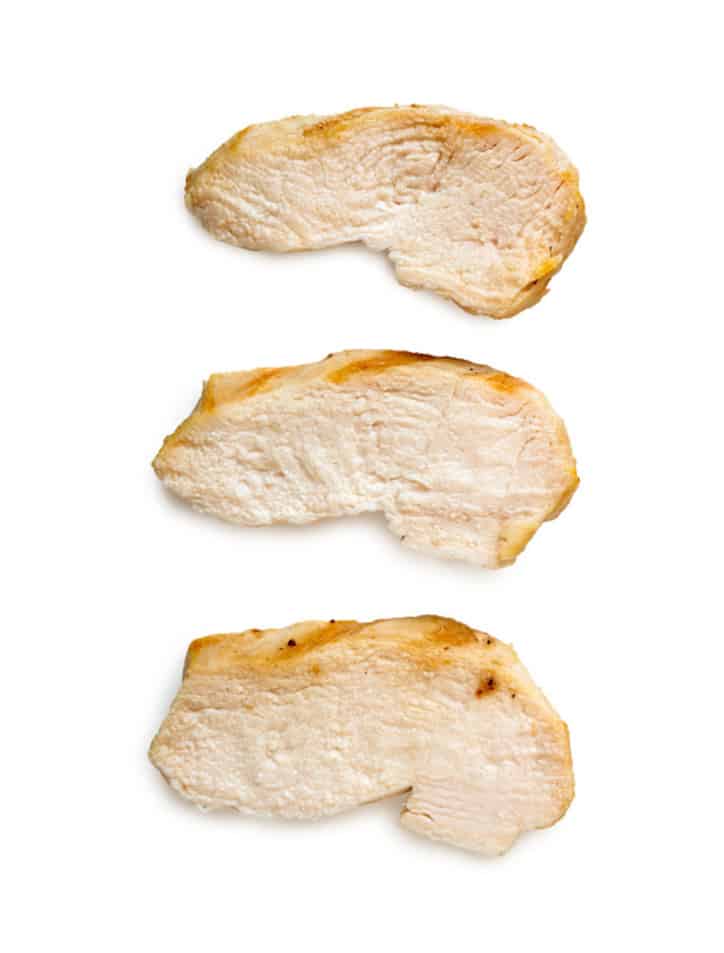To poach frozen chicken breasts, simply place them in simmering water, cover, and cook for 15-20 minutes. Poaching frozen chicken breasts is a convenient way to cook them without sacrificing flavor or moisture.
This gentle cooking method involves simmering the chicken in liquid until it reaches a safe internal temperature while retaining its tenderness. Whether you’re preparing a quick weeknight meal or need a protein base for salads and sandwiches, knowing how to poach frozen chicken breasts can be a valuable kitchen skill.
In this guide, we’ll cover the essential steps, tips, and tricks to help you achieve perfectly poached chicken breasts every time. So, grab your frozen chicken and let’s get started with an easy and effective poaching technique.
The Basics Of Poaching Frozen Chicken Breasts
Poaching frozen chicken breasts may seem daunting at first, but understanding the basics of this cooking method can lead to flavorful and tender results. By utilizing the gentle technique of poaching, you can transform frozen chicken breasts into a delicious and versatile protein option for various dishes.
Benefits Of Poaching
Poaching offers several benefits when it comes to preparing frozen chicken breasts. It is a gentle cooking method that helps retain the natural juices and flavor of the chicken, resulting in moist and tender meat. Additionally, poaching allows you to infuse the chicken with various aromatics and seasonings, enhancing its overall taste profile.
How Poaching Differs From Other Cooking Methods
When poaching frozen chicken breasts, it’s essential to understand how this cooking method differs from others. Unlike boiling, poaching involves simmering the chicken in a flavorful liquid at a slightly lower temperature, preventing the meat from becoming tough or dry. This gentle process sets poaching apart from methods such as grilling or baking, as it prioritizes the retention of moisture and tenderness in the chicken.
Preparing The Chicken For Poaching
Preparing the chicken for poaching is a crucial step to ensure the frozen chicken breasts are flavorful and tender. From thawing techniques to seasoning options, every detail matters when it comes to achieving a delicious and perfectly poached chicken dish.
Thawing Techniques For Frozen Chicken Breasts
When poaching frozen chicken breasts, it’s essential to thaw them thoroughly before cooking. There are a few methods to safely and effectively thaw frozen chicken breasts:
- Refrigerator: Place the frozen chicken breasts in the refrigerator for 24-48 hours until fully thawed. This method allows for a gradual thaw, resulting in evenly defrosted chicken.
- Cold Water Bath: Submerge the frozen chicken breasts in a sealed plastic bag in cold water. Change the water every 30 minutes until the chicken is no longer frozen. This method is faster than refrigerator thawing but requires more attention.
- Microwave: Use the defrost setting on the microwave to thaw the chicken breasts. Be cautious and check the chicken regularly to prevent partial cooking.
Seasoning And Flavoring Options
Before poaching the chicken breasts, consider seasoning and flavoring options to enhance the taste of the dish. Here are some popular choices:
- Salt and Pepper: A simple yet effective seasoning for poaching chicken breasts. Sprinkling salt and pepper over the chicken before poaching can bring out the natural flavors of the meat.
- Herbs and Spices: Experiment with herbs like thyme, rosemary, or spices such as paprika, cumin, or garlic powder to add depth to the chicken’s flavor profile.
- Aromatics: Adding sliced onions, garlic, or ginger to the poaching liquid can infuse the chicken with an aromatic essence, elevating the overall taste.
- Liquid Flavorings: Consider using broths, wine, or citrus juices as part of the poaching liquid to impart additional flavors into the chicken breasts.
The Poaching Process
Poaching frozen chicken breasts is a great way to ensure they stay moist and flavorful. The gentle cooking process of poaching helps to keep the meat tender and juicy, making it a versatile option for a variety of recipes. The poaching process involves selecting the right poaching liquid, monitoring the cooking time and temperature, and checking for doneness.
Selecting The Right Poaching Liquid
When poaching frozen chicken breasts, it’s important to use a flavorful and aromatic liquid to enhance the taste of the meat. Here are some popular poaching liquids:
- Chicken broth
- Vegetable broth
- Water with added herbs and spices
Monitoring The Cooking Time And Temperature
Proper monitoring of the cooking time and temperature ensures that the chicken breasts cook evenly without becoming overcooked or underdone. Use a food thermometer to check the internal temperature of the chicken breasts. The ideal cooking temperature for poaching chicken is around 165°F (74°C).
Checking For Doneness
Once the chicken breasts have reached the desired cooking time and temperature, it’s important to check for doneness. Cut into the thickest part of the chicken breasts to ensure there is no pink color and the juices run clear. Additionally, the internal temperature should reach at least 165°F (74°C) to ensure the chicken is thoroughly cooked.
Serving And Enjoying Poached Frozen Chicken Breasts
Once you’ve successfully poached your frozen chicken breasts, serving and enjoying them is the next step. With their juicy and flavorful texture, poached chicken breasts are versatile and can be used in a variety of dishes to cater to different tastes and preferences. Let’s explore some creative ways to use poached chicken, as well as tips for serving and presentation.
Creative Ways To Use Poached Chicken
Poached frozen chicken breasts can be used in countless creative and satisfying dishes. Whether you prefer a light salad or a hearty main course, poached chicken can elevate the flavor profile of your creations. Here are some innovative ideas for using poached chicken:
- Create a refreshing chicken salad with a mix of fresh greens, crunchy vegetables, and a light vinaigrette dressing.
- Prepare a savory chicken stir-fry with an assortment of colorful vegetables and your favorite seasonings.
- Make a flavorful chicken and vegetable soup by combining poached chicken with a variety of vegetables and broth.
Tips For Serving And Presentation
When it comes to serving poached frozen chicken breasts, presentation can make all the difference. Here are some tips to ensure your poached chicken is served and presented in an appetizing manner:
- Slice the poached chicken breasts diagonally to create visually appealing slices for salads, wraps, or main dishes.
- Garnish the chicken with fresh herbs, such as parsley or thyme, to add a pop of color and enhance the overall presentation.
- Consider serving the poached chicken on a bed of mixed greens or alongside a medley of roasted vegetables for an elegant and balanced meal.

Credit: www.loavesanddishes.net
Frequently Asked Questions On How To Poach Frozen Chicken Breasts?
Can You Poach Frozen Chicken Breasts?
Yes, you can poach frozen chicken breasts by adding them to simmering liquid for even cooking.
What Is The Best Way To Thaw Frozen Chicken Breasts?
The recommended way to thaw frozen chicken breasts is by placing them in the refrigerator overnight.
How Long Does It Take To Poach Frozen Chicken Breasts?
It typically takes around 20-30 minutes to poach frozen chicken breasts in simmering liquid.
What Seasonings Can I Use To Flavor Poached Chicken?
Popular seasonings for poached chicken include garlic, thyme, bay leaves, and peppercorns for added flavor.
Is It Safe To Eat Poached Chicken If It’s Still Pink?
No, chicken should be cooked until it reaches an internal temperature of 165°F to ensure safety.
Can I Use The Poaching Liquid For Making Sauces?
Yes, the flavorful poaching liquid can be utilized as a base for sauces or soups to enhance the dish’s taste.
Conclusion
Incorporating poached frozen chicken breasts into your cooking repertoire can open up a world of convenience and versatility. With the right technique, you can easily produce tender, flavorful chicken for a variety of dishes. By following the simple steps outlined in this guide, you can elevate your culinary skills and enjoy delicious meals with ease.
Last Updated on April 23, 2025 by Pauline G. Carter

